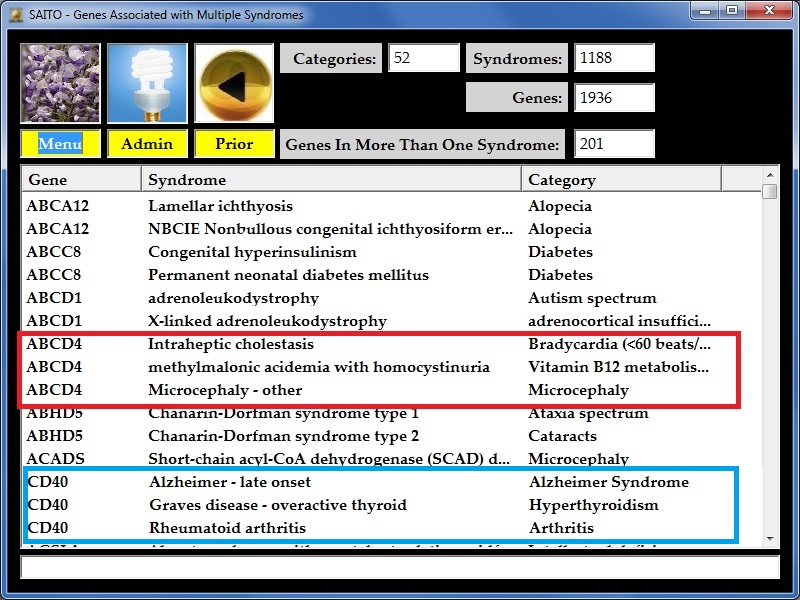| Not all diseases and disabilities are
caused by genes. And there can be a false positive |
| where someone presents with symptoms
but does not have a corresponding genetic |
|
defect as well as a false negative where someone has a genetic
defect but does not |
| present with symptoms. Worse,
different versions of a gene can cause wildly |
| different symptoms. For example, from
the SAITO application software |
 |
| As can be seen above, the ABCD4 gene
(a real gene found on chromosome 14 in |
| the q24.3 region) is associated with
at least three seemingly unrelated conditions - |
|
see the red rectangle. In a similar manner, the CD40 gene
(found on chromosome |
|
20 in the q13.12 region) is associated with three apparently
unrelated conditions |
| - see the blue rectangle. Things are
rarely simple - Graves Disease is part of a |
|
spectrum and there are at least eight genes involved in it.
Likewise, rheumatoid |
|
arthritis is a spectrum of symptoms with at least 52 different
genes involved. |
| If you are are a parent, a physician
or the person getting a DNA test that shows that |
| your INS, ABCD4 or CD40 gene is
faulty is not sufficient - what is necessary to know |
| is what is the specific defect or the
specific defects. A major difficulty is that genetic |
| research continues - new effects of
genes are found so that what the Human Genome
|
| Project thought was normal or
functional in 2003 no longer is. That means vendors |
| who provide DNA sequencing need an
on-going national or, preferably, |
| planetary standard for what is a
functional sequence, what is not and what is unclear. |
